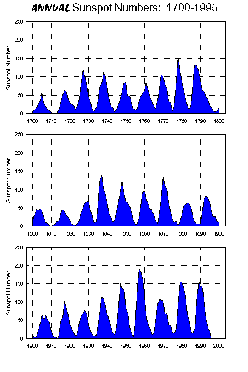A graph of sunspot numbers from 1700 through 1993, showing the 11-year sunspot cycle.
Click on image for full size
Image courtesy NOAA/NGDC.
Space Weather: Quiet vs. Active Times
We tend to think of the Sun as unchanging. In some ways it is! The Sun rises every morning and sets every night. The amount of light it shines on Earth is very stable from day to day and even over the course of many, many years. But, some things do change about the Sun.
The number and placement of sunspots on the face of the Sun changes over time. The number of sunspots tells us roughly how active the Sun will be. Lots of sunspots means the Sun will be very active and stormy. That means solar flares and CMEs. Very few sunspots means the Sun will be calm. How active the Sun is does affect life here on Earth.
The Sun, like all stars, has changed over the course of its very long life. When it was younger, the Sun was more active then it is now. The Sun has also gotten brighter over its lifetime.
You can go to bed tonight knowing the Sun will rise in the
morning. Remember, though, that tomorrow's Sun will be a tad different that
the one that sets tonight!
You might also be interested in:
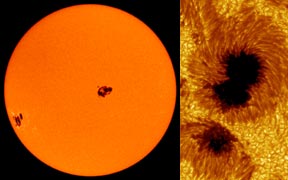
Sunspots are dark spots on the Sun. They may look small, but they are actually as bigas a planet like Earth or Mars! Sunspots are "dark" because they are colder than the areas around them. Of course, they
...more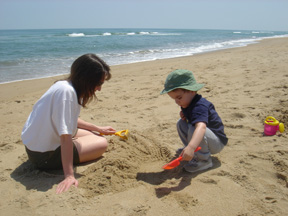
The Sun is very important to the Earth. The Sun warms our planet, heating the surface, the oceans and the atmosphere. The Sun also gives us light. We definitely couldn't live on Earth without the Sun!
...more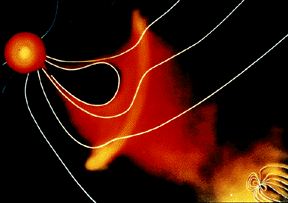
The Sun is huge. It has an effect on things even if they are far from the Sun. The "bubble" where the Sun has an effect on things is called the heliosphere. It goes even past Pluto! The place
...more
Did you know that the Earth has a magnetic field? It's almost as if a giant bar magnet ran through our planet. The magnetic field of the Earth is like a huge bubble around our planet. This bubble keeps
...more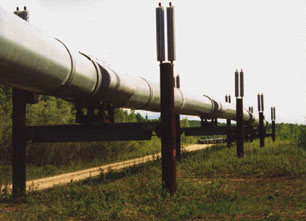
Pipelines for transporting oil, natural gas, and water are often made of conducting materials like steel. Very long pipelines (thousands of kilometers/miles) are used to transport oil and gas at high latitudes,
...more
The invention of the seamless, electrically-welded pipe in the 1920's which was capable of carrying material under high pressures, enabled the building of profitable pipelines over a thousand miles long.
...more
Certain animal species on Earth (such as the homing pigeon) are able to detect Earth's magnetic field and use it for navigational purposes. Homing pigeons have been known to reach home by flying over 1,6
...more


